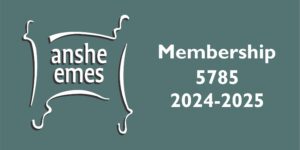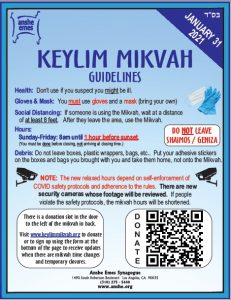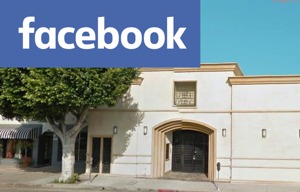A. A Census Is Taken. A census was taken of male Israelites over the age of twenty (who were liable for military service), in connection with which each man was to make a token payment of a half-shekel of silver to be used for the construction of the Sanctuary.
B. Details of the Sanctuary. Aharon and his sons were told to make a brass laver to be used as a washing basin, which laver was to stand in the Court between the altar of the burnt offering and the entrance to the Sanctuary. Oil from four prescribed aromatic herbs mixed with olive oil was to be used to anoint the priests and vessels, and incense made from selected sweet spices was to be prepared for sacred use. Betzalel and Oholiav were Divinely chosen to supervise construction of the Sanctuary. Despite the importance of this task, the Jews were reminded to cease all work on Shabbos.
C. The Golden Calf (“Eigel HaZohav”). Moshe had been on Mt. Sinai for 40 days and 40 nights and the people, fearing that he wouldn’t return, clamored for a visible object which they could worship. They persuaded Aharon and his sons to build a Golden Calf from their jewelry. The people brought offerings to, and sang and danced around, the Golden Calf. Hashem was angered at this display of heresy, and He sent Moshe down from the Mountain, informing him of the Israelites’ sin and vowing to destroy them. Moshe entreated Hashem to be merciful and not give the Egyptians the opportunity to gloat over the Israelites’ misfortune, but instead to remember His eternal covenant with the Patriarchs. On hearing this plea, Hashem agreed to give them another chance.
D. Moshe Destroys The Tablets. Descending from the Mountain on the 17th of Tammuz with the two tablets of the law engraved by Hashem on stone, Moshe witnessed the Jews’ heresy with the Golden Calf and threw the tablets to the ground in disgust. Moshe then destroyed the Golden Calf by burning it, grounding it into powder and throwing it into a stream (from which he made the Jews drink). He rebuked Aharon, who responded that he had been forced to carry out the people’s demands. Moshe then called upon all of his supporters to rally around him; the Levites (none of whom, according to Da’as Z’Keinim, had participated in the Golden Calf) responded immediately and, at Moshe’s command, slew about 3,000 leaders of the revolt (less than .001% of the 3 million people).
E. Moshe pleads for Hashem’s Mercy. Moshe’s love and compassion for his people led him to implore Hashem to forgive them, for if they were destroyed he had no desire to live. Hashem responded that only those who willfully sinned would be destroyed, but, in view of Moshe’s interceding on their behalf, the remainder of the people would be escorted (by Hashem’s messenger, not Hashem Himself) into Israel. Upon hearing of Hashem’s disapproval, The Jews mourned and removed their ornaments as a sign of grief.
F. Moshe Pitches His Tent Outside the Camp. Moshe pitched his tent outside the camp which had been defiled by the Golden Calf. In intimate communication with Hashem, he asked for a revelation of the Divine attributes to assist him in leading the people. Hashem reassured him that He would be merciful and lead the people into Eretz Yisroel, for Moshe had personally found favor in His eyes. In reply to a further request that he be able to behold the Divine Glory, Moshe was told that no mortal could see Hashem and live. Nevertheless, Moshe was allowed a glimpse of the Divine Radiance from behind a cleft in the mountain rock.
G. Moshe Ascends Mt. Sinai. Once again, Moshe ascended the Mountain alone, carrying with him the two new tablets he had been commanded to prepare. Hashem descended in a cloud, revealed Himself and renewed His covenant with Israel by repeating the chief commandments previously given (e.g., the prohibition against idolatry, the commandment to observe the Festivals and Shabbos, etc.). Hashem Himself inscribed the Ten Commandments on the two tablets, while Moshe recorded the contents of the renewed covenant. After an additional forty days and forty nights on the Mountain, during which he abstained from all food and drink, Moshe again descended the Mountain and returned to the camp. His face shone with a Divine glow and he communicated Hashem’s words to Aharon, the Elders and then the entire assembly. After he had finished speaking, Moshe covered his radiant face with a veil. Thereafter, he removed it only when he entered Hashem’s Divine presence or when he delivered his message to the people.
II. Divrei Torah
A. Lil’Mode U’lilamed (Rabbi Mordechai Katz)
1. The Census. Why was a “half” shekel used? According to Rambam, this teaches us that no Jew is complete when alone — a Jew can only reach the ultimate spiritual heights when he/she associates and cooperates with fellow Jews.
2. The Golden Calf. After all of the miracles (the 10 plagues, the splitting of the Red Sea, etc.), how could the Jews have committed this sin? The Jews were prompted by a miscalculation regarding which day the 40 days and 40 nights commenced (i.e., the Jews erroneously believed that the day Moshe left counted as the first day).
B. Living Each Day (Rabbi Abraham Twerski)
The Golden Calf. R’ Chaim Shmulevitz explains that the above miscalculation led to a momentary period of confusion and depression — since the Exodus, they had been under Moshe’s constant leadership; his guidance and direct communication with Hashem gave them stability and certainty. When they feared that Moshe wasn’t returning, they panicked, leading them to build the Golden Calf. This teaches us that we must be particularly alert during moments of confusion and depression in our lives, since we can be vulnerable to mistakes and errors in judgment.
C. Artscroll Chumash
1. The Half Shekel.
a. Israel’s status is elevated by contribution to charitable causes; this is why they were counted by having the nation join in contributing to a sacred cause.
b. The equal participation of the entire nation symbolizes that all Jews must share in achieving the national goals; by “passing through” the census, they (and we) are required to forsake our own selfish interests for the collective good.
c. The half-shekel contribution is also mentioned as “atonement for your souls”, which symbolizes the great power in the unity of a nation striving toward a common goal; when everyone joins in a constructive cause, the spiritual merits of all the individuals become merged so that their personal attainments come together to assist one another.
2. Toiling in Torah. Rashi notes that while Hashem taught Moshe the Torah throughout the 40 days and 40 nights he was on Mt. Sinai, he constantly forgot it. Finally, Hashem gave him the Tablets as a gift; if it was impossible for someone even as great as Moshe to absorb the entire Torah, why didn’t Hashem give him the Tablets at the outset, rather than forcing him to toil for 40 days/40 nights? Chiddushei Harim explains that the Torah can only be understood with Hashem’s help, but that He only gives such assistance after someone has tried his/her utmost to master it on his/her own. Thus, Moshe earned the Divine gift by means of his effort.
D. Kol Dodi on the Torah (Rabbi David Feinstein)
The Half-Shekel. Why was each man commanded to give exactly one half-shekel? Just because people serve Hashem and the community in different capacities doesn’t mean that one necessarily contributes more than the other. Hashem doesn’t look at the total hours spend in service of Him, but how much of an individual’s available time is devoted to service of Hashem and the sincerity with which one serves Him. Thus, everyone who serves Hashem to the utmost of their ability stand as equals before Hashem.
E. Growth Through Torah (Rabbi Zelig Pliskin)
1. Having peace of mind on Shabbos requiring mastering your negative traits. “Six days work shall be done, and on the seventh day it should be a complete rest sacred to the Almighty.” Rashi comments that a “complete rest” entails changing (not merely controlling) one’s negative traits and emotions (e.g., worry, temper, anger, etc.) and striving to master positive attitudes and approaches which are conducive to peaceful relationships with others. This ideal is illustrated by the following story: One Friday night, a cop came to R’ Yaakov Yosef Herman’s house to inform him that he should go immediately to his store, which was ablaze. R’ Yaakov thanked him for the message, but explained that he couldn’t since it was Shabbos. The entire Shabbos, R’ Yaakov showed no anxiety. After Shabbos ended (and he finished an unhurried havdalah), he went to his store, expecting to see it in shambles; instead, his store was in tact and it was the adjoining store which had been destroyed (All For The Boss).
2. When you make a mistake be flexible enough to admit it and improve yourself. “And Hashem said to Moshe, I have seen this people and they are a stiff-necked people”. R’ Simcha Zissel comments that despite the enormity of the sin of the Golden Calf, the main fault cited by Hashem is that the Jewish people were “stiff-necked” (i.e. that they lacked the flexibility to admit their error). When someone is flexible, he/she will be able to regret and make amends for their mistakes, and change.
F. Wellsprings of Torah (Rabbi Alexander Zusia Friedman)
1. The Shabbos. “To observe the shabbos throughout their generations . . . “. The Hebrew word le-dorotham (“throughout their generations”) is spelled without the vav; hence, it may be read le-dirotham (“throughout their dwelling places”). When Shabbos enters and the dwelling place of the Jewish home is ready to receive it, the Divine Presence says “I will dwell here with you.” (Yalkut Reubeni)
2. Understanding life events. ” . . . and thou shall see My Back, but My Face shall not be seen.” An alternative reading: ” . . . and thou shall see My Ways” afterwards, but they shall not be seen before. Frequently, we don’t understand the purpose of certain events in our lives when they occur. Only afterwards, with the passage of time, do the meaning of these events and the purpose of Providence in bringing them to pass become clear. (Torat Moshe)
G. Darash Moshe (Rav Moshe Feinstein, z’tl)
The Second Set of Tablets. “Carve for yourself two tablets of stone.” Why did Moshe have to hew the second tablets himself before Hashem wrote on them, while the first tablets were made entirely by Hashem, both the carving and the inscription? To answer this, we must first understand why the Jews sinned with the Golden Calf, causing the destruction of the first tablets and necessitating the second set. They believed that since the first tablets, which contained the essence of the Torah and had been given at Mt. Sinai, was totally Hashem’s work, it would be impossible for humans by themselves to understand the depths of Torah without the supernatural powers. Therefore, they built the Golden Calf in the erroneous belief that by serving it they could come closer to Hashem and achieve a deeper understanding of His Torah. As long as Moshe was with them, they relied on him to teach them Torah and bring them closer to Hashem. Now that they thought he was dead, they felt compelled to look for other forces to fill the void, and so they made the Calf. The truth is, however, that the Torah was intended for mortals to understand directly with their own powers, without resorting to supernatural intermediaries and it is in our hands to achieve the most lofty level of Torah solely with our own powers. Thus, Hashem wanted the second tablets to be as much as possible the work of Moshe, to show the people that they too could achieve everything that was in their own power to achieve. If we only make the effort, Hashem will help us understand His Torah and to reach the highest levels it holds for us. In Malachai 3:22, the prophet called the Torah the “Torah of Moshe,” the Torah which was given through humans and intended for humans to fathom with their own resources.
H. Peninim on the Torah (Rabbi A. L. Scheinbaum)
1. A Stiff-necked People. The Israelites are referred to as a “stiff-necked people”. This reference can also be viewed as a blessing in disguise. By being “stiff-necked,” we have been able to muster the moral challenge to maintain our faith in Hashem, despite the pain and suffering which have accompanied us throughout history. We have continued to hold our heads up high.
2. The Inner Voice. “And Moshe stood in the gate of the camp, and he said Whoever is with Hashem should come to me!'” The Chofetz Chaim taught that there is a lesson to learn from Moshe’s call to the people. Every Jew has moments in which he hears that inner voice call out “come to me!” — to go forward and act for Torah, to do a mitzvah. Listen when you hear that sound, and respond immediately while the opportunity is still there and while the plaintive cry is still reverberating inside of you.
NEXT WEEK: VAYAHKEL




 Visit the group and request to join.
Visit the group and request to join.
